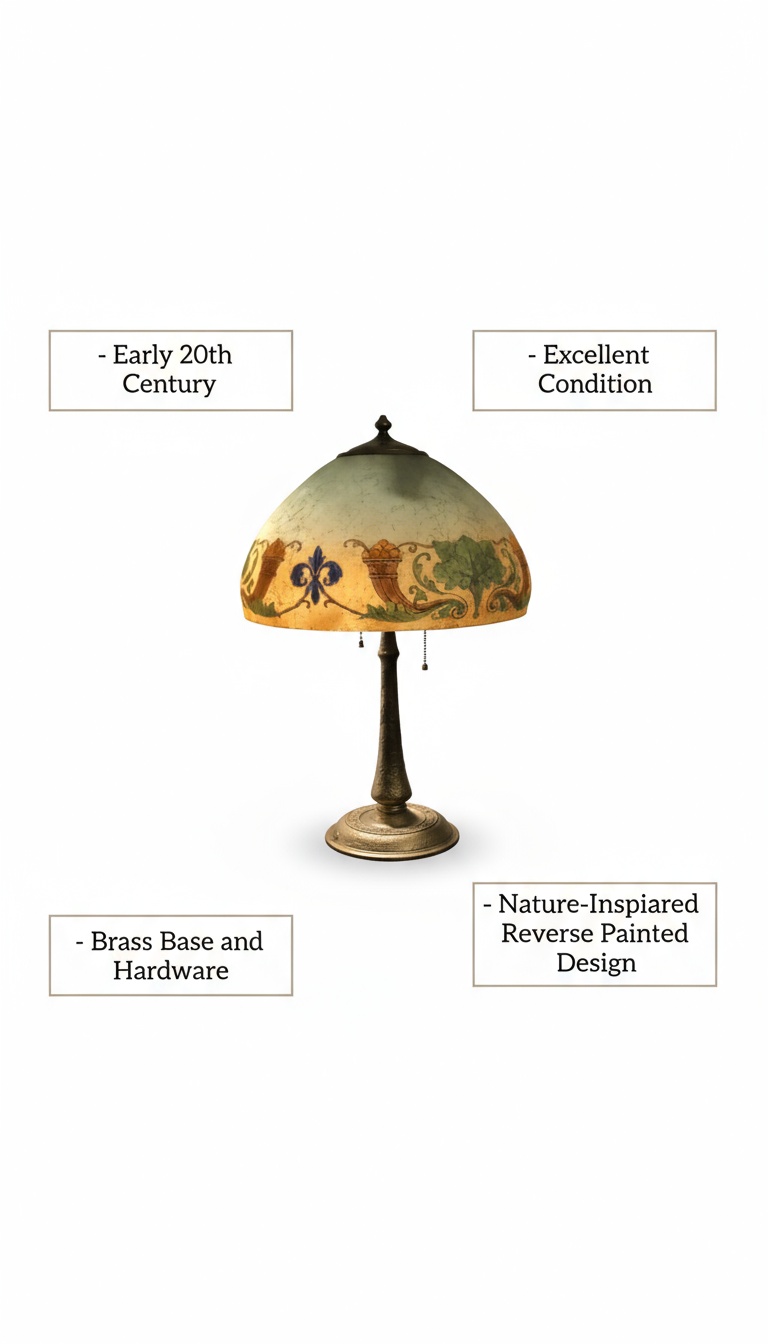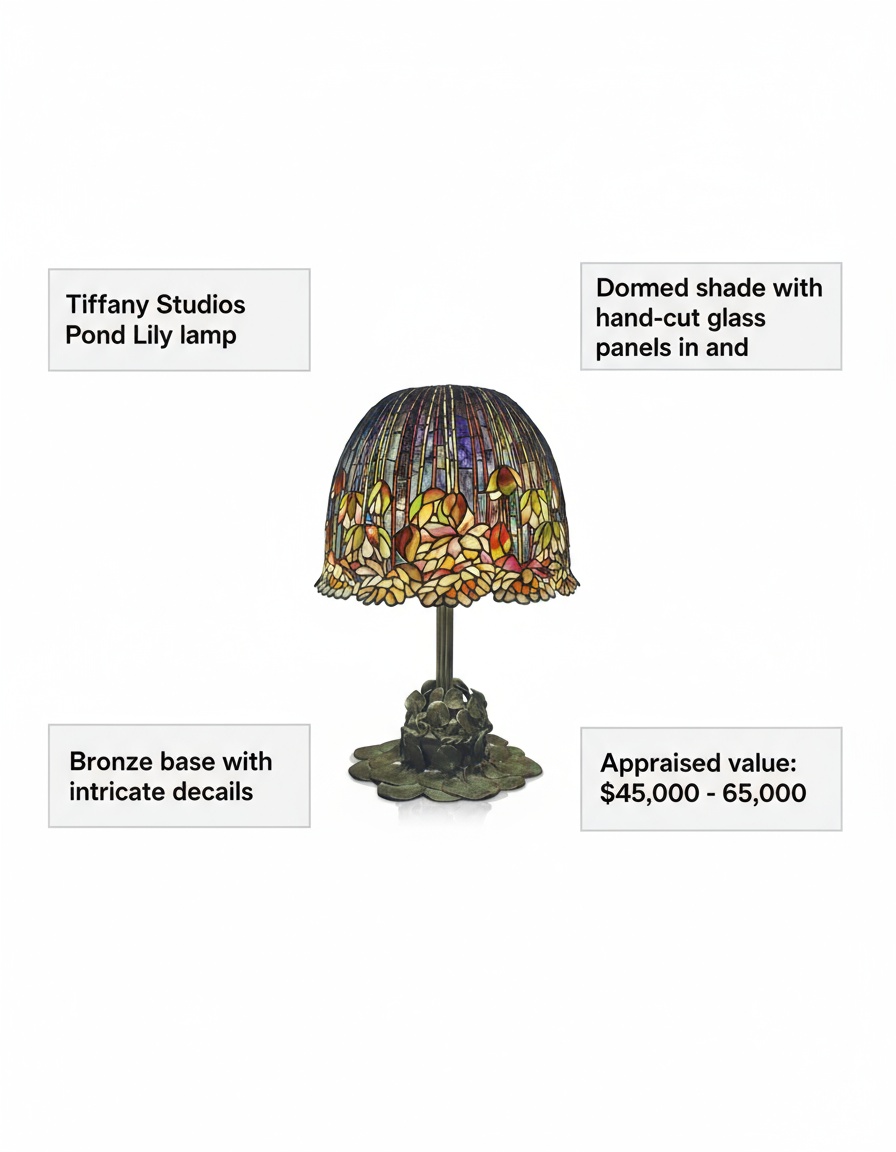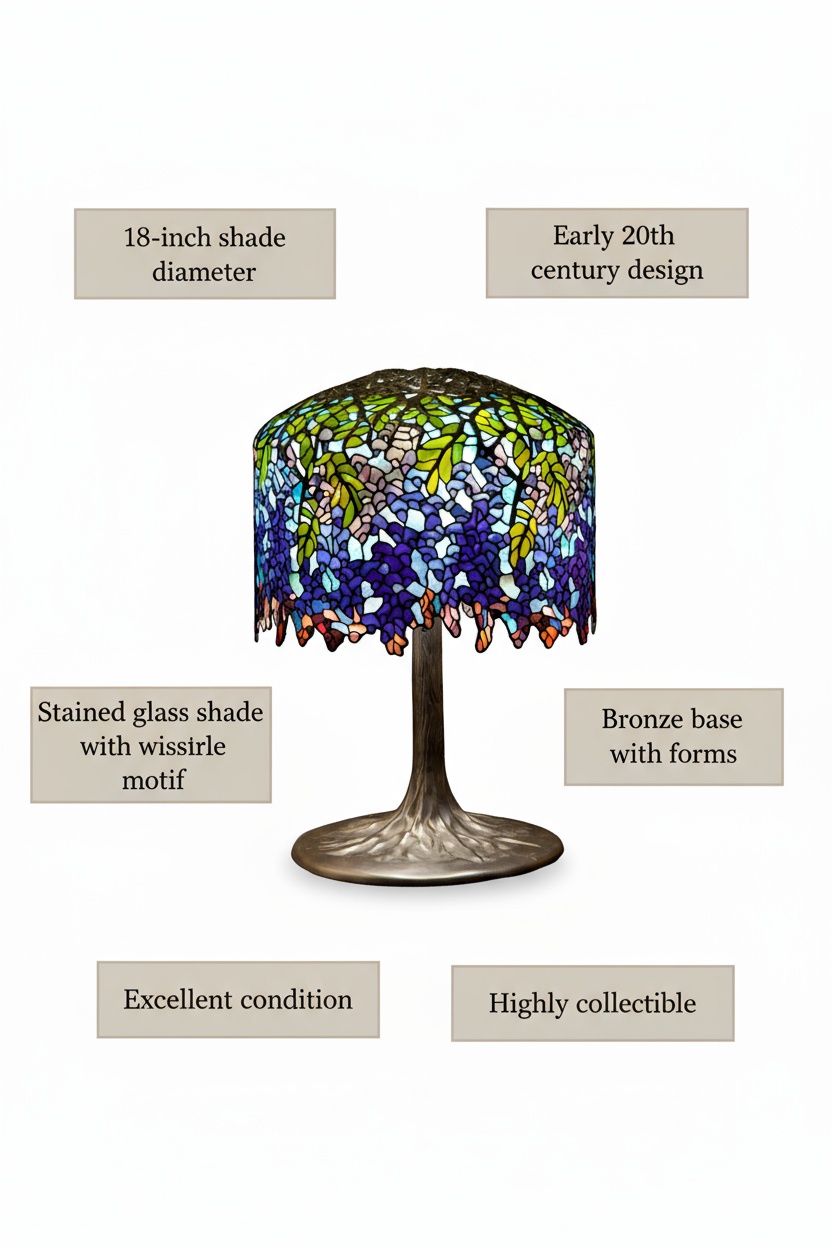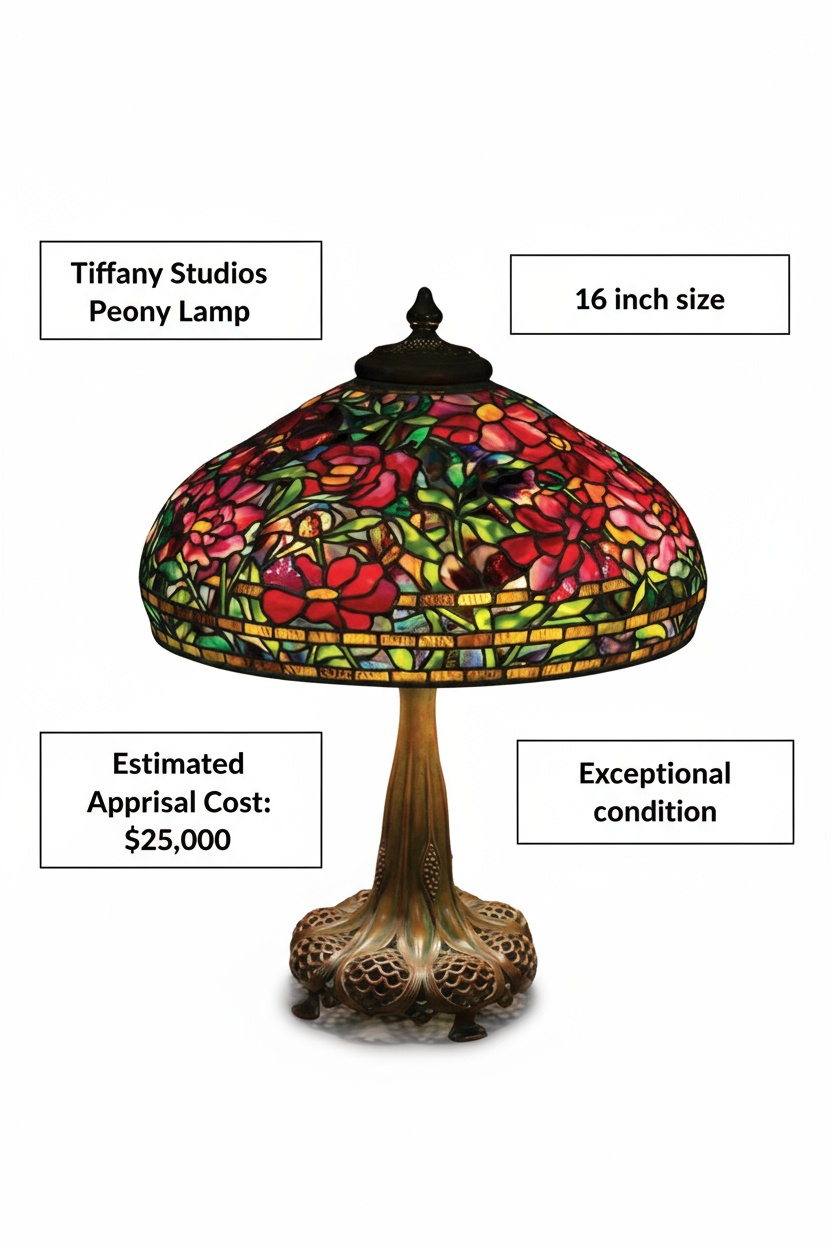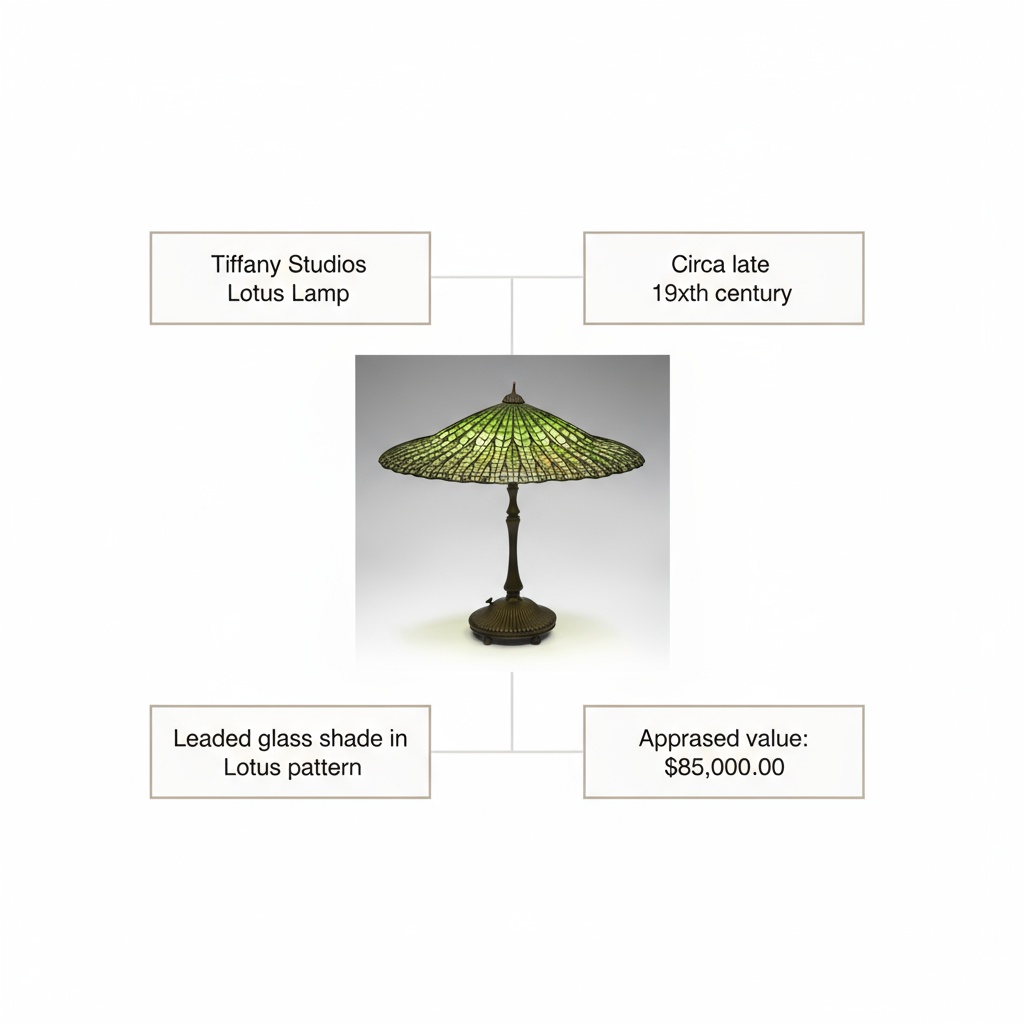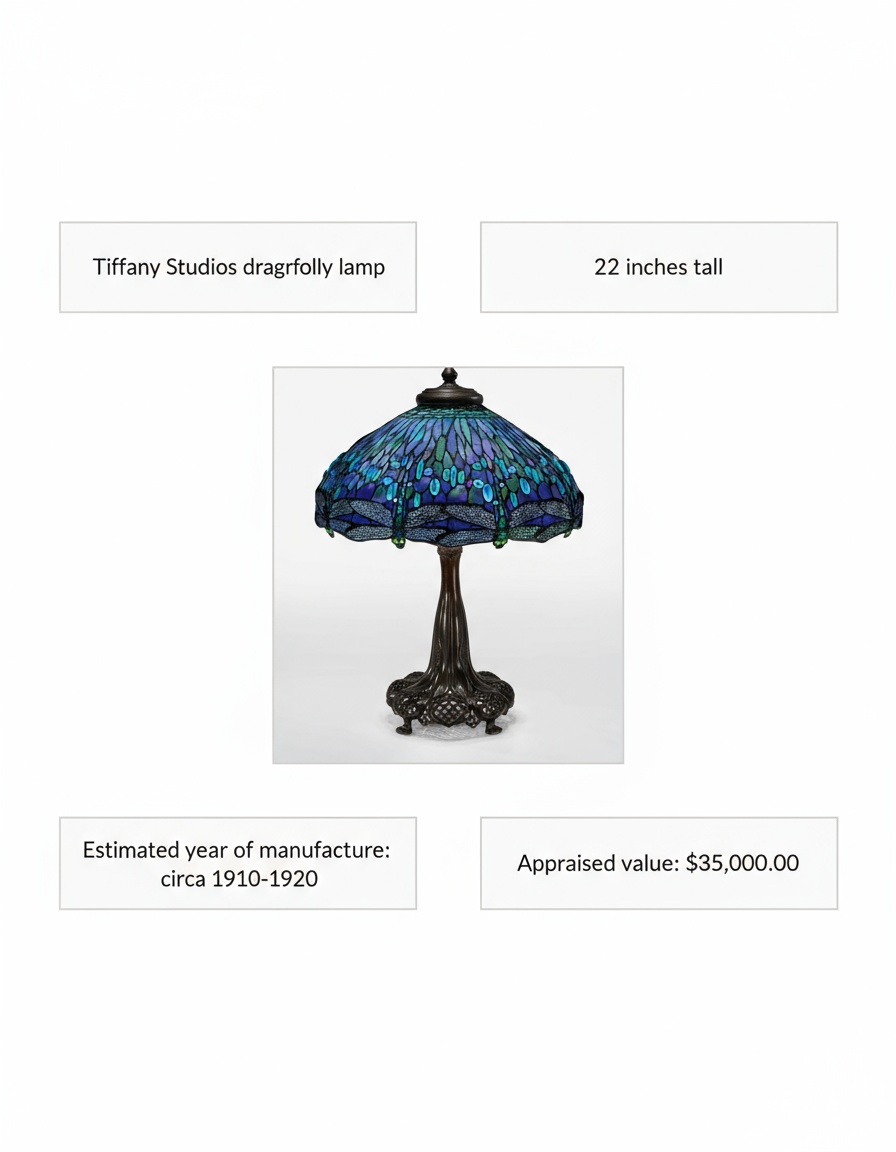<h2>Understanding Handel Reverse Painted Lamp Value</h2>
<p>Reverse painted lamps are some of the most treasured pieces in American decorative arts. If you own a <strong>Handel reverse painted lamp</strong>, understanding its true market value—whether you're selling, insuring, or simply curious—requires knowing what collectors, dealers, and appraisers look for. These early 20th-century pieces combine artistry with craftsmanship, making them highly sought after by interior designers, museums, and serious collectors alike.</p>
<p>The value of your Handel lamp depends on several interconnected factors. Authenticity, condition, size, subject matter, and provenance all play crucial roles in determining what your piece is really worth. Let's explore what makes these lamps so valuable and how to assess yours.</p>
<h2>What Are Handel Lamps?</h2>
<p><strong>Handel lamps</strong> were produced in the United States during the late 19th and early 20th centuries by the Handel Company, a respected manufacturer known for its exceptional decorative lighting. The company became famous for pioneering the reverse painted technique—a method where designs are hand-painted on the inside of glass shades, creating depth, luminosity, and an almost ethereal quality when lit.</p>
<p>The typical Handel lamp features a brass or metal base paired with an intricately painted glass shade. Subjects range from serene landscapes and botanical scenes to bird motifs and abstract designs, all executed with remarkable detail. The craftsmanship and attention to detail in each shade make these lamps true functional art pieces.</p>
<div class="callout tip"><p><strong>Pro Tip</strong></p>
<p>Look for the <strong>Handel signature or paper label</strong> on the shade or base—this mark of authenticity significantly increases your lamp's value and collectibility.</p></div>
<h2>Key Factors That Determine Handel Reverse Painted Lamp Value</h2>
<h3>Authenticity and Signature</h3>
<p>The most critical factor in valuing your Handel reverse painted lamp is confirming its authenticity. <strong>Genuine Handel lamps</strong> typically bear a signature on the shade—either painted directly or applied as a label. This mark of authenticity can dramatically affect your lamp's worth, sometimes making the difference between a $2,000 piece and a $10,000+ investment.</p>
<p>When examining your lamp, look for consistent early 20th-century construction, original wiring or carefully documented rewiring, and characteristic Handel techniques like finely detailed reverse painting. If you're uncertain about authenticity, a professional appraisal from a specialist familiar with Handel's work is essential.</p>
<h3>Condition and Restoration History</h3>
<p>The condition of your Handel lamp directly impacts its appraisal value. Examine the shade carefully for:</p>
<ul>
<li><strong>Chips, cracks, or missing paint</strong> – Even small damage reduces value significantly</li>
<li><strong>Cloudiness or discoloration</strong> – Can indicate age or cleaning issues</li>
<li><strong>Original hardware and base</strong> – Replacements lower value</li>
<li><strong>Restoration work</strong> – Professional restoration can preserve value, but amateur repairs typically diminish it</li>
</ul>
<p>A lamp in excellent condition with no major signs of wear commands premium prices. If your lamp has been restored, documentation of professional restoration work helps justify the asking price and demonstrates care.</p>
<div class="callout info"><p><strong>Did You Know?</strong></p>
<p>Interior designers actively seek quality Handel lamps for high-end residential and commercial projects, making condition and authenticity especially important for contemporary sales.</p></div>
<h3>Size, Complexity, and Subject Matter</h3>
<p>Larger Handel lamps with intricate, multi-colored designs typically command higher prices than smaller, simpler examples. Subject matter also influences value—certain themes like mountain landscapes, water scenes, or rare bird motifs appeal strongly to collectors and may attract premium pricing.</p>
<p>The skill evident in the painting itself—the layering of colors, the precision of brushwork, and the overall artistic quality—contributes significantly to your lamp's market value. A beautifully executed nature scene with subtle color transitions is worth more than a simpler design.</p>
<h3>Provenance and Documentation</h3>
<p>Your lamp's history adds both credibility and value. If you have:</p>
<ul>
<li>Original purchase receipts</li>
<li>Documentation of previous ownership</li>
<li>Exhibition history</li>
<li>Professional appraisals or auction records</li>
<li>Clear photographs showing signatures and condition</li>
</ul>
<p>...these records strengthen your lamp's provenance, making it easier to sell and justifying a higher asking price. Collectors and institutions value transparency and documented history.</p>
<h2>How Much Is a Handel Reverse Painted Lamp Worth?</h2>
<p>Most Handel reverse painted lamps that appear at auction or through specialist dealers sell in the <strong>$1,000 to $15,000 range</strong>, depending on size, condition, and subject matter. Rare, large, or museum-quality pieces can exceed these figures substantially. An estimate for a typical high-quality example in excellent condition falls around <strong>$6,000 to $10,000</strong>.</p>
<p>However, pricing varies widely based on current market demand and where you're selling. To get a precise value for your specific lamp, you'll need to consider recent comparable sales and, ideally, obtain a professional photo-based appraisal.</p>
<div class="callout note"><p><strong>Key Takeaway</strong></p>
<p>Market value depends on many variables—a certified appraiser can provide an accurate, defensible figure backed by comparable sales data and expert analysis.</p></div>
<h2>How to Identify a Reverse Painted Lamp Shade</h2>
<p>Not all painted lamp shades are reverse painted. Understanding the distinction helps you determine authenticity and value. <strong>Reverse painted shades</strong> are painted on the <em>inside</em> of the glass, so the image appears to float behind the surface when viewed from outside.</p>
<p>To identify a reverse painted shade:</p>
<ol>
<li><strong>Hold the lamp to strong light</strong> – Look closely at where the paint sits. Reverse painted designs show brushwork and layered highlights visible through the glass</li>
<li><strong>Examine the texture</strong> – The outer surface should feel smooth and glossy; the inside shows paint application</li>
<li><strong>Look for depth</strong> – Reverse painted work creates an illusion of depth with layered colors and highlights</li>
<li><strong>Check for consistent wear</strong> – Since paint is protected by the glass, reverse painted shades show minimal surface wear compared to traditionally painted shades</li>
</ol>
<p>Compare your lamp's shade to known Handel examples in reference books or online galleries to confirm the technique and maker.</p>
<h2>Who Buys Handel Lamps?</h2>
<p>Understanding your potential buyers helps you price and market your lamp effectively. <strong>Handel reverse painted lamps</strong> appeal to several distinct audiences:</p>
<ul>
<li><strong>Specialized antique dealers</strong> – Often have established collector networks and can market high-end pieces effectively</li>
<li><strong>Auction houses</strong> – Particularly those specializing in American decorative arts or fine lighting</li>
<li><strong>Dedicated collectors</strong> – Serious enthusiasts who actively seek specific artists or styles</li>
<li><strong>Interior designers</strong> – Sourcing authentic period pieces for upscale residential or commercial projects</li>
<li><strong>Museums and institutions</strong> – Acquiring significant examples for permanent collections or exhibitions</li>
</ul>
<p>Each buyer type approaches valuation differently. A dealer might offer wholesale pricing, while a collector might pay premium prices for a rare example. Understanding your audience and what they value helps you achieve the best sale outcome.</p>
<p>For insights on <a href="/blog/appraising-fine-glass-and-crystal-valuing-delicate-glassware-and-artistic-creations">appraising fine glass and crystal</a>, or exploring <a href="/blog/how-to-accurately-determine-the-value-of-your-memorabilia-and-collectibles">how to accurately determine the value of your memorabilia and collectibles</a>, professional resources can guide you through the process.</p>
<h2>How to Tell If Your Lamp Shade Is Worth Money</h2>
<p>Several indicators suggest your Handel reverse painted lamp has significant investment value:</p>
<p><strong>Maker's signature or label</strong> – Non-negotiable for authentic Handel pieces</p>
<p><strong>Size and complexity</strong> – Larger shades with elaborate, detailed designs command higher prices</p>
<p><strong>Quality of painting</strong> – Fine brushwork, color blending, and artistic execution indicate higher quality</p>
<p><strong>Condition</strong> – Pristine shades without chips, cracks, or heavy restoration are worth substantially more</p>
<p><strong>Rarity</strong> – Limited production runs or uncommon subject matter increase desirability</p>
<p><strong>Original components</strong> – Original brass base, hardware, and unchanged wiring preserve value</p>
<p>If your lamp checks multiple boxes—especially authenticity, excellent condition, and artistic merit—it likely represents a solid investment worth professional appraisal.</p>
<h2>How to Identify an Authentic Handel Lamp</h2>
<p>Distinguishing authentic Handel lamps from similar reproductions or unmarked pieces requires careful examination:</p>
<ol>
<li><strong>Check for Handel signatures</strong> – Look on the shade for painted signatures or affixed paper labels. This is the primary authentication marker</li>
<li><strong>Examine construction methods</strong> – Genuine Handel lamps show consistent, high-quality metalwork and soldering typical of early 20th-century manufacturing</li>
<li><strong>Study the painting technique</strong> – Authentic reverse painted work displays the characteristic layering, detail, and quality that defined Handel's reputation</li>
<li><strong>Compare to reference materials</strong> – Museums, auction catalogs, and collector guides show documented Handel examples for comparison</li>
<li><strong>Consult a specialist</strong> – For valuable pieces, professional authentication provides certainty and defensibility</li>
</ol>
<p>Documentation from a certified appraiser familiar with Handel production strengthens your confidence in authenticity and supports your asking price when selling.</p>
<h2>Preparing for a Handel Reverse Painted Lamp Appraisal</h2>
<p>A professional, <strong>USPAP-compliant appraisal</strong> gives you an accurate market value for insurance, sale, or estate purposes. Appraisers typically hold credentials from organizations like the <a href="/"><strong>International Society of Appraisers (ISA)</strong></a> or <a href="/"><strong>American Society of Appraisers (ASA)</strong></a> and understand contemporary market dynamics.</p>
<p>To streamline the appraisal process and get the most useful results:</p>
<p><strong>Gather clear photographs:</strong>
- Overall view of the complete lamp
- Close-ups of signatures, labels, and maker's marks
- Images showing any damage, repairs, or restoration
- Detail shots of the painting quality and subject matter</p>
<p><strong>Prepare measurements:</strong>
- Height of the complete lamp (base to top of shade)
- Diameter of the shade
- Height of the shade alone</p>
<p><strong>Document provenance:</strong>
- Purchase receipts or invoices
- Previous appraisals or auction records
- Any historical information about ownership
- Documentation of any professional restoration</p>
<p><strong>Note condition issues:</strong>
- Chips, cracks, or missing glass
- Areas of paint loss or fading
- Original versus replaced components
- Rewiring details or electrical updates</p>
<p>With this information compiled, you can work with an appraiser—whether through <a href="/types/artwork">online appraisal services</a> or <a href="/types/personal-property">in-person evaluations</a>—to receive accurate, professionally defensible valuation backed by recent comparable sales data.</p>
<div class="callout tip"><p><strong>Pro Tip</strong></p>
<p>For collectible lighting pieces, update your appraisal every few years to reflect market trends and ensure your insurance coverage remains adequate.</p></div>
<h2>Related Appraisal Services and Resources</h2>
<p>Understanding your Handel lamp's value fits into a broader context of appraisal services available today. If you're exploring valuation for other items in your collection or estate, you might consider appraisals for related <a href="/blog/what-you-need-to-know-about-antique-furniture-appraisals">antique furniture</a>, <a href="/blog/what-do-appraisers-look-for-when-appraising-antique-artwork">fine artwork</a>, or other <a href="/types/memorabilia-and-collectibles">memorabilia and collectibles</a>.</p>
<p>Professional appraisals serve multiple purposes—whether you're <a href="/types/personal-property">selling</a>, <a href="/types/household-goods">insuring</a>, or simply understanding your collection's true worth. The value of professional guidance lies in having certified experts back your valuations with rigorous market analysis, comparable sales data, and industry expertise.</p>
<h2>Making Informed Decisions About Your Handel Lamp</h2>
<p>Whether you're a long-time collector refining your knowledge or a homeowner who inherited a Handel reverse painted lamp, understanding its value empowers you to make informed decisions. The market for these early 20th-century treasures remains strong, with serious buyers actively seeking quality examples.</p>
<p>A Handel reverse painted lamp represents more than a functional light source—it's a piece of American decorative arts history, executed by craftspeople who pioneered techniques still admired today. Your lamp's specific value depends on authenticity, condition, artistry, and current market demand, all factors that professional appraisers can assess comprehensively.</p>
<p>By gathering documentation, understanding what collectors value, and obtaining a certified professional appraisal, you position yourself to achieve the best outcome whether you're selling, insuring, or simply preserving your collection for future generations.</p>
<div class="callout note"><p><strong>Key Takeaway</strong></p>
<p>A professional, certified appraisal backed by comparable sales analysis and expert knowledge ensures you understand your Handel reverse painted lamp's true market value and can make confident decisions about its future.</p></div>

